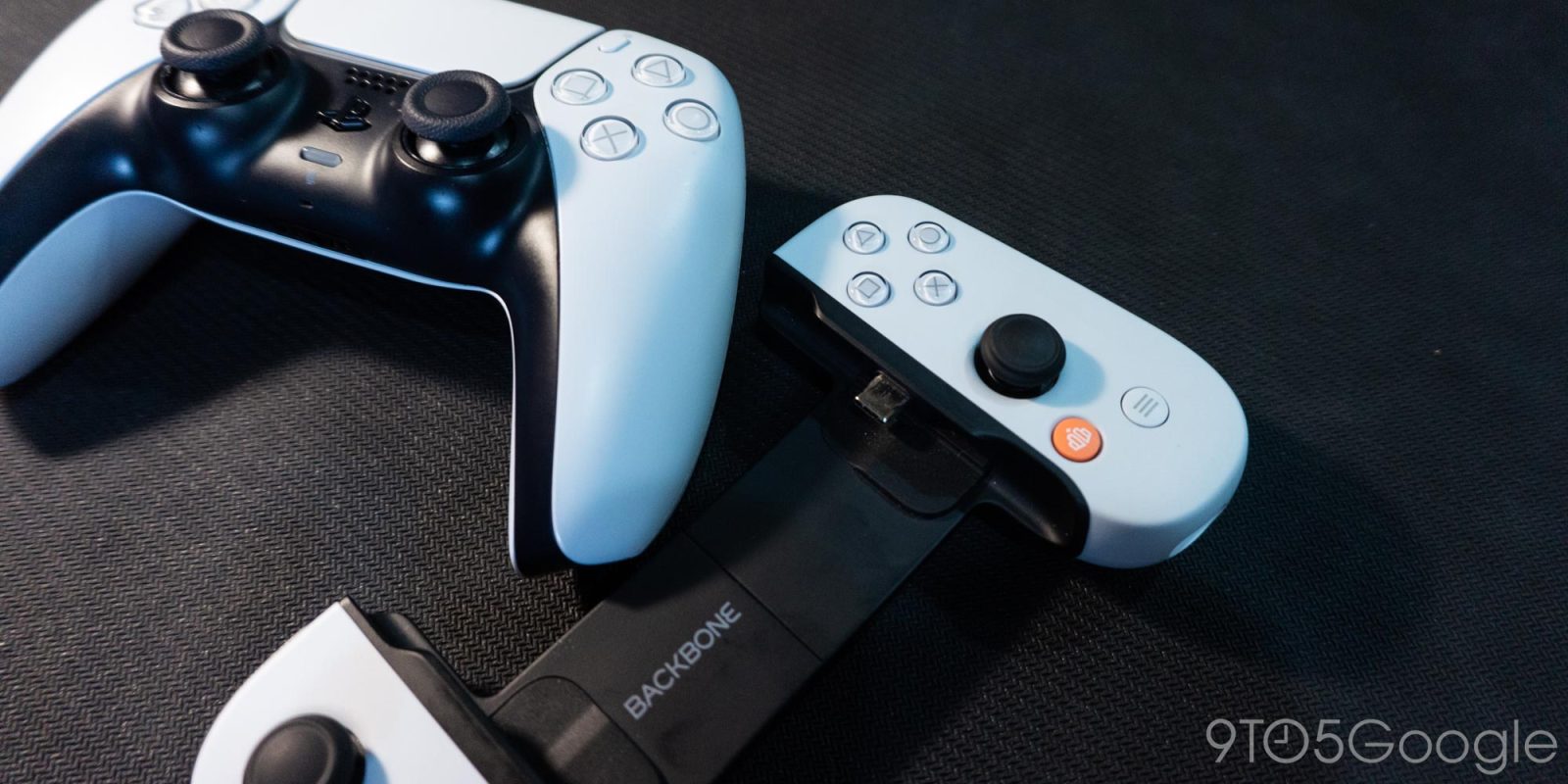
Backbone One PlayStation Edition is the cleanest way to take your PS5 games with you everywhere, but a few minor issues hold it back from being the outright best mobile controller.
Surprising compatibility
Like most mobile game controllers these days, the Backbone One grips the sides of your phone and connects through the USB-C port. (As a side note, Backbone has confirmed that its USB-C controllers are also compatible with the iPhone 15 series.) Some older competing controllers have issues in that regard, being unable to fit on taller, unusually shaped phones like most recent Pixel phones (with their camera bars). Backbone One does not face these issues, clamping effortlessly onto the Pixel 7 Pro.
That said, I do have to take my preferred case off of my Pixel to get it to fit properly and reach the USB-C connection. That alone has led me to use the controller less frequently than I’d like – especially as competing controllers are being expressly designed to fit your phone and its case.
Update: Backbone has released a new generation of its controller, adding magnetic adapters that allow it to fit phones (and cases) of various sizes. This design change handily addresses one of our biggest complaints about the Backbone One, making it our current top pick.
Notably, the Backbone One is uniquely not solely a mobile controller. By connecting a USB-C cable to the port on the bottom, you can plug it into a PC, Mac, or other device. In all honesty, I don’t know that I’d personally ever use this instead of a full-size controller, but it could be useful in a pinch.
Solid controls and design…
I cannot overstate how gorgeous the Backbone One PlayStation Edition is. The crisp white chassis, stark black midsection, and transparent accents on the buttons all come together to fully evoke the design of Sony’s DualSense. This is – bar none – the best-looking mobile controller on the market today.
That said, the likeness to the PlayStation DualSense controller is solely aesthetic. The buttons have a fair bit more wiggle than Sony’s and press in with a click rather than a thunk. Similarly, the control sticks – like those on every other controller of this size – don’t have enough range to play games that need precision, but they’re perfectly sufficient for everything that isn’t a shooter. You also won’t find any built-in haptics or rumble.
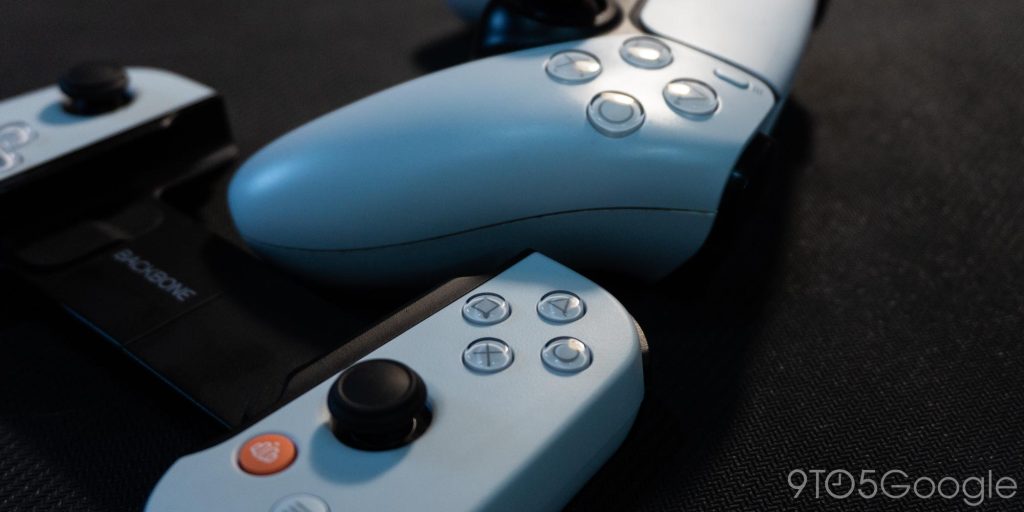
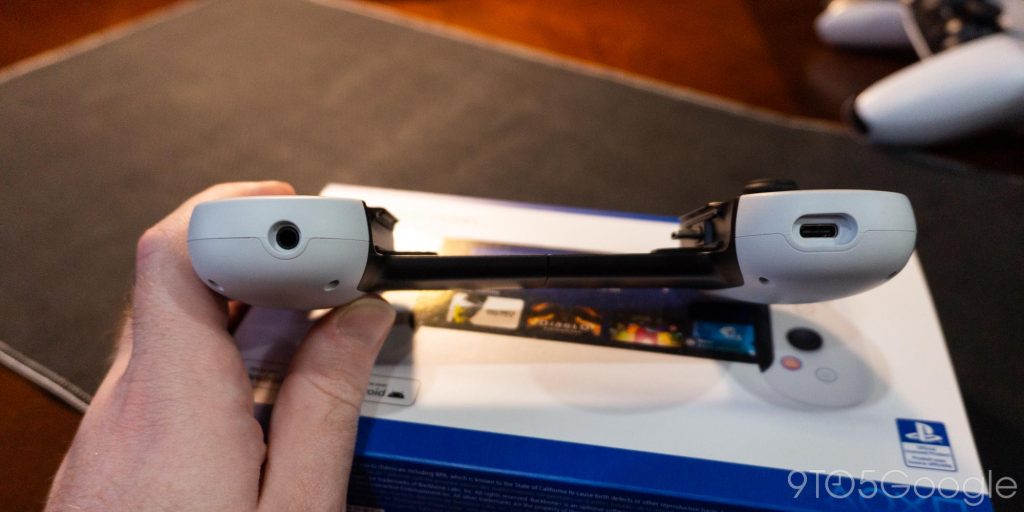
Despite these minor gripes, I’ve thoroughly enjoyed using the Backbone One as a gateway to playing my current slate of PlayStation titles (Diablo IV, Spider-Man, and Kingdom Hearts) on the go. Comfort-wise, I’ve had no issue playing multi-hour sessions with this controller, though I would prefer to have a bit more space for my ring and pinky fingers to grip/rest.
Along the underside of the controller, you’ll find a USB-C charging port (the same port used to connect to PCs) as well as a 3.5 mm audio port for headsets. The latter is particularly useful because Bluetooth headsets often introduce noticeable audio lag.
Just as you’d expect, the Backbone One expands to fit your phone and compacts down when not in use. It’s not exactly pocketable, but you’ll likely have no issues finding room for it in your everyday carry. The company also sells a separate carrying case for $24.99.
…but two buttons shy
For all of its niceties, though, the Backbone One – particularly the PlayStation Edition – falls just short of greatness because it’s missing two buttons. It all comes down to the four buttons spread across the bottom left and right of the controller’s face.
The pair on the left-hand side consists of a typical Select button and an Android-native screenshot shortcut. On the right, you’ll find a Start button and a dedicated shortcut to launch the Backbone app.
So, setting aside the two Android shortcuts, there are only two “center” buttons. Meanwhile, modern Xbox and PlayStation consoles need four buttons in this area, which we can (loosely) describe as Start, Select, Home, and Share.
For whatever reason, the official PlayStation Remote Play app – again, the app this controller is specially licensed to support – recognizes the Backbone One’s center-left button as Share instead of as Select (a click of the touchpad on a DualSense controller).
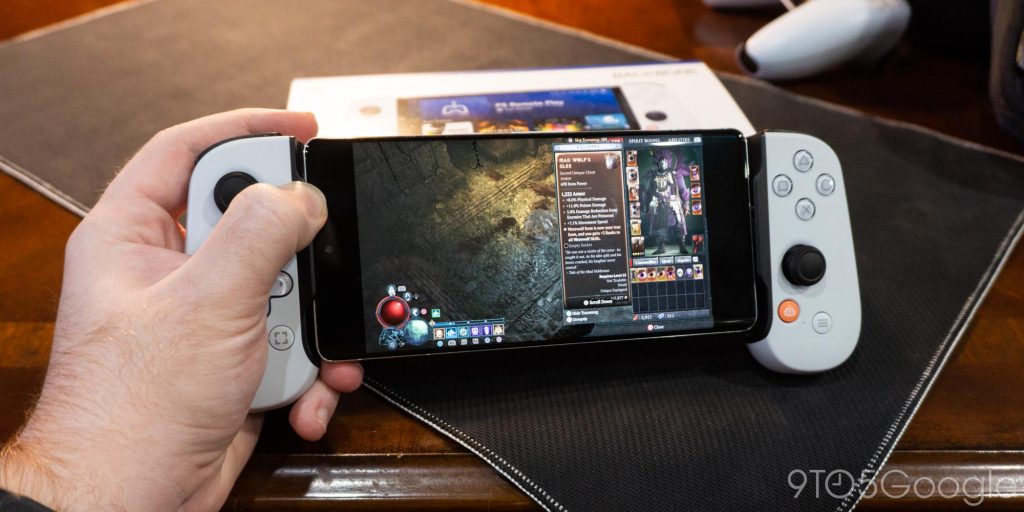
In some games, this missing button will go unnoticed, but games with in-depth menus, like Diablo IV, make frequent use of that Select button. The only way to press that button in the Remote Play app is to double-tap the touchscreen during gameplay.
Thankfully, this is only a quirk of the official PlayStation app. Other apps, such as those from Xbox, are correctly mapped to the Backbone One. There are also deeply configurable third-party options for streaming from your PS5, but using Sony’s official app is part of the point of buying a licensed PlayStation controller.
Meanwhile, both the PlayStation and Xbox apps require you to press an on-screen button to access either console’s home menu, though this is only a minor inconvenience compared to the other button.
Immersive software ties it all together
Purely on the merits of the hardware, the Backbone One is a solid mobile controller, checking most of the boxes. However, what sold me on the controller is actually the Backbone app.
In recent years, companies have released Android handhelds dedicated to controller-based mobile and cloud gaming – particularly the good-enough Logitech G Cloud and the high-end Razer Edge. Each of those handhelds included an attempt at a game launcher intended to serve as the home for your gaming needs.
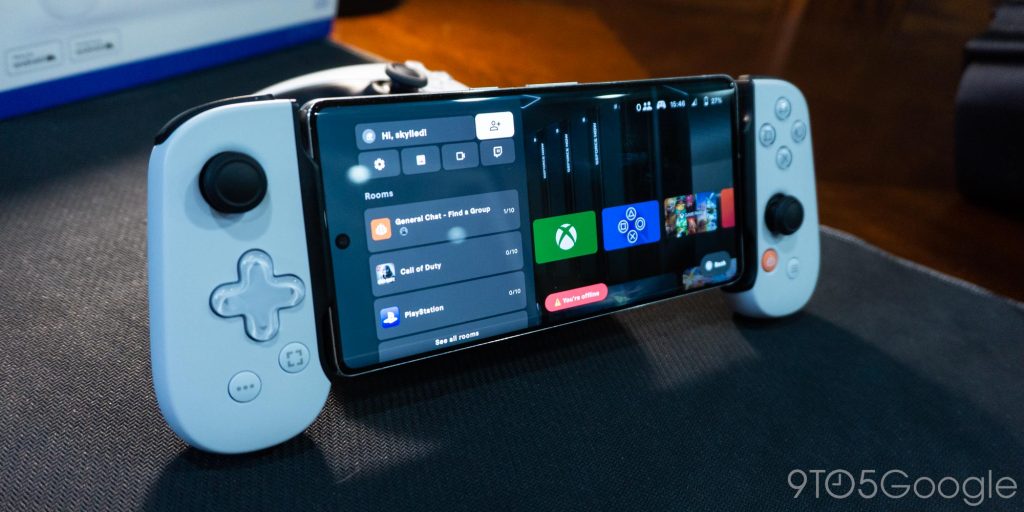
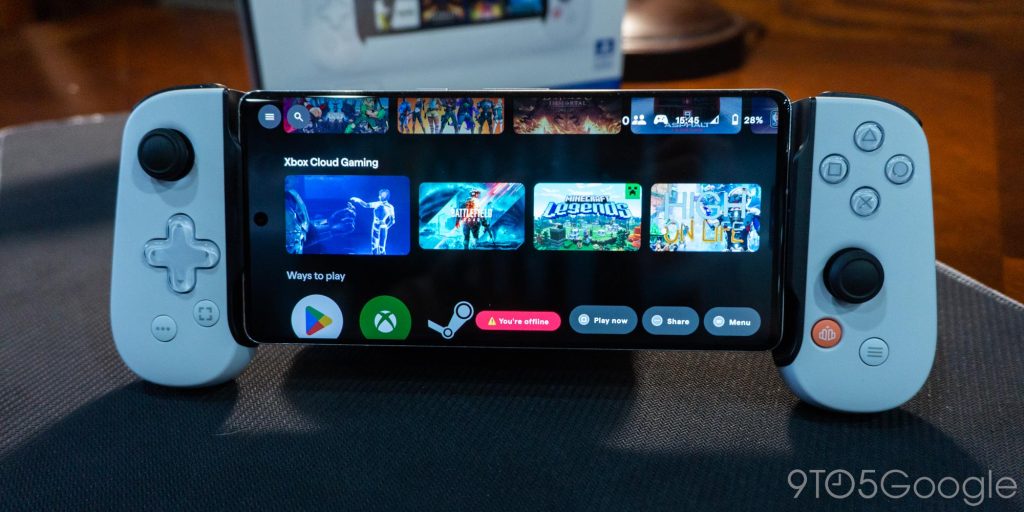
By comparison, the free Backbone app offers a truly immersive experience that I simply was not expecting. After completing an initial setup process, the Backbone app gives way to a full-blown, highly polished Android game launcher. From this hub, you can see your currently installed games and discover new ones to play, including the full library of Xbox Game Pass streaming titles.
Yes, oddly enough, the Backbone app – despite the bold PlayStation branding of this controller – offers a significantly better experience for Xbox players than PlayStation ones. Browsing the launcher, you’d be hard-pressed to find much sign of PlayStation integration. Even the official Remote Play app doesn’t appear in the game list, though a third-party alternative does.
The lone Sony integration is an optional shortcut to launch the PlayStation app via a double-tap. I have no idea why that app – with no gameplay features – is the one launched instead of the dedicated Remote Play app.
Meanwhile, the Backbone app also hosts some social features, including a friends list and public/private voice chats. Most gamers would likely be better served by using Discord instead (where your friends likely already are), but it’s fascinating to see the depth of features here.
With this app alone, Backbone has provided a far better Android gaming handheld experience than the likes of Logitech and Razer, all without requiring you to buy hundreds of dollars worth of hardware.
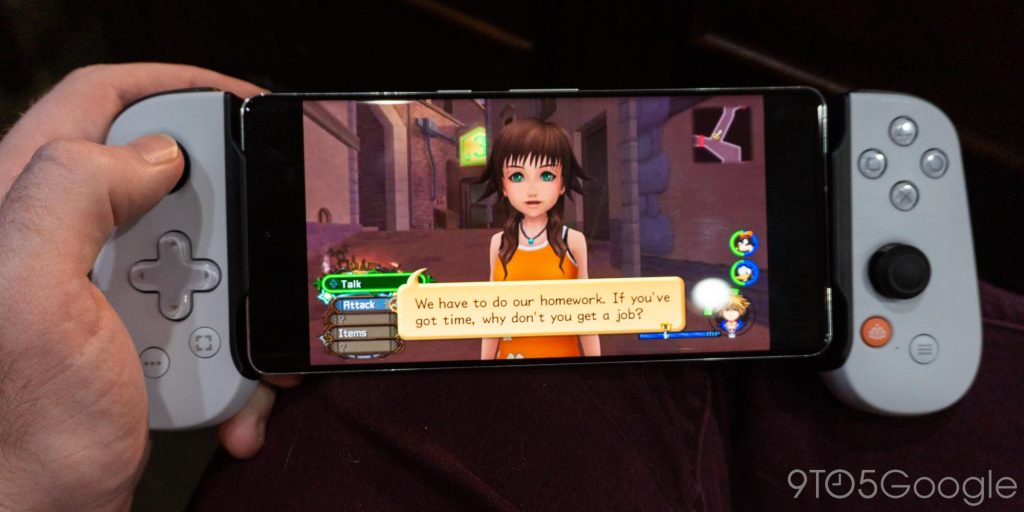
Should you buy the Backbone One PlayStation Edition?
Putting it all together, the Backbone One PlayStation Edition is one of the better mobile controllers on the market today, between its eye-catching design, mostly well-arranged controls, and inclusion of passthrough charging and headset port.
At a retail price of $99, the Backbone One PlayStation Edition is no small investment. Whether or not you should buy this controller depends on whether you fall into its particular niche. Despite its branding, the Backbone One PlayStation Edition will shine its brightest for the gamer that frequently crosses the boundaries of Android, Xbox, and PlayStation.
FTC: We use income earning auto affiliate links. More.




Comments